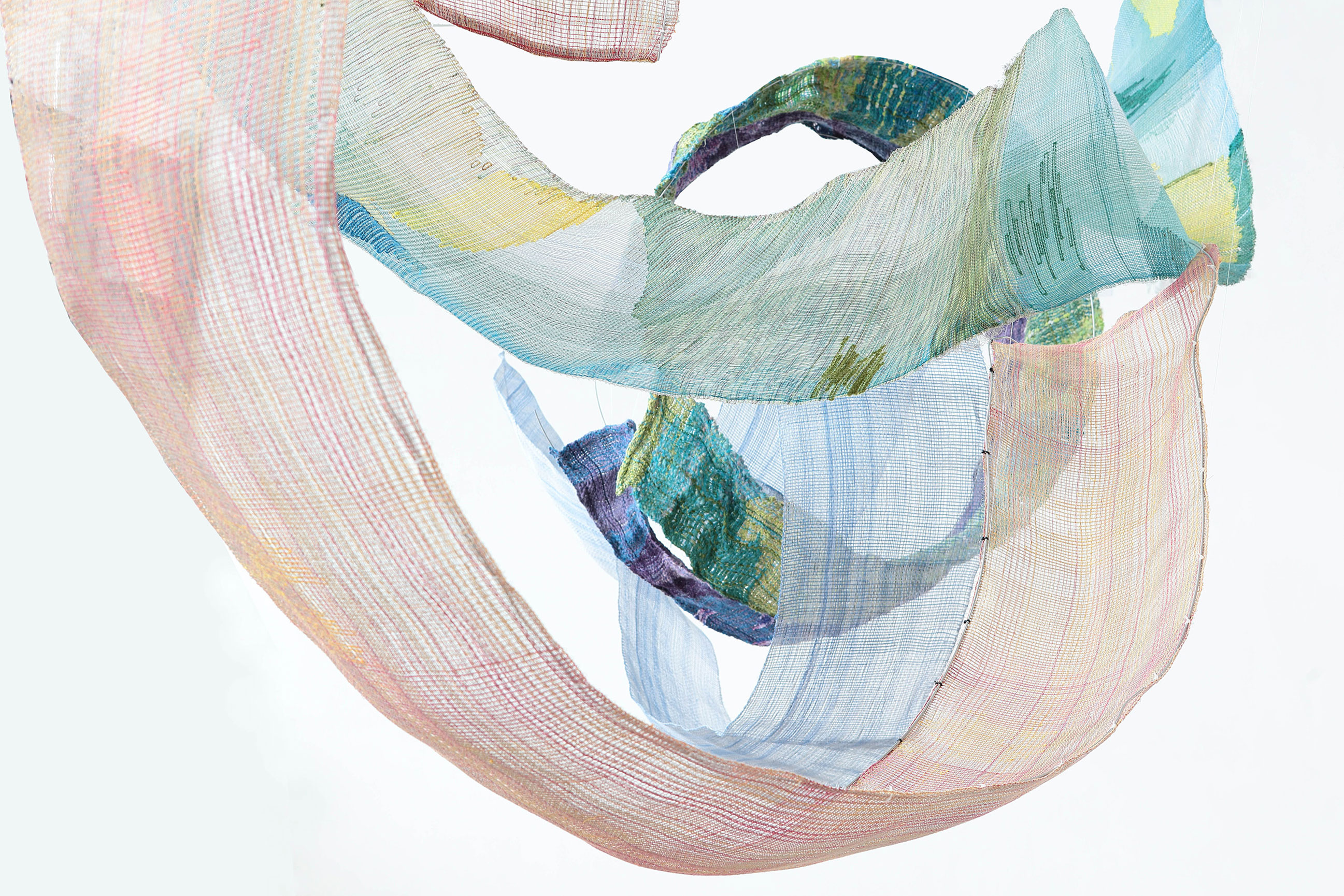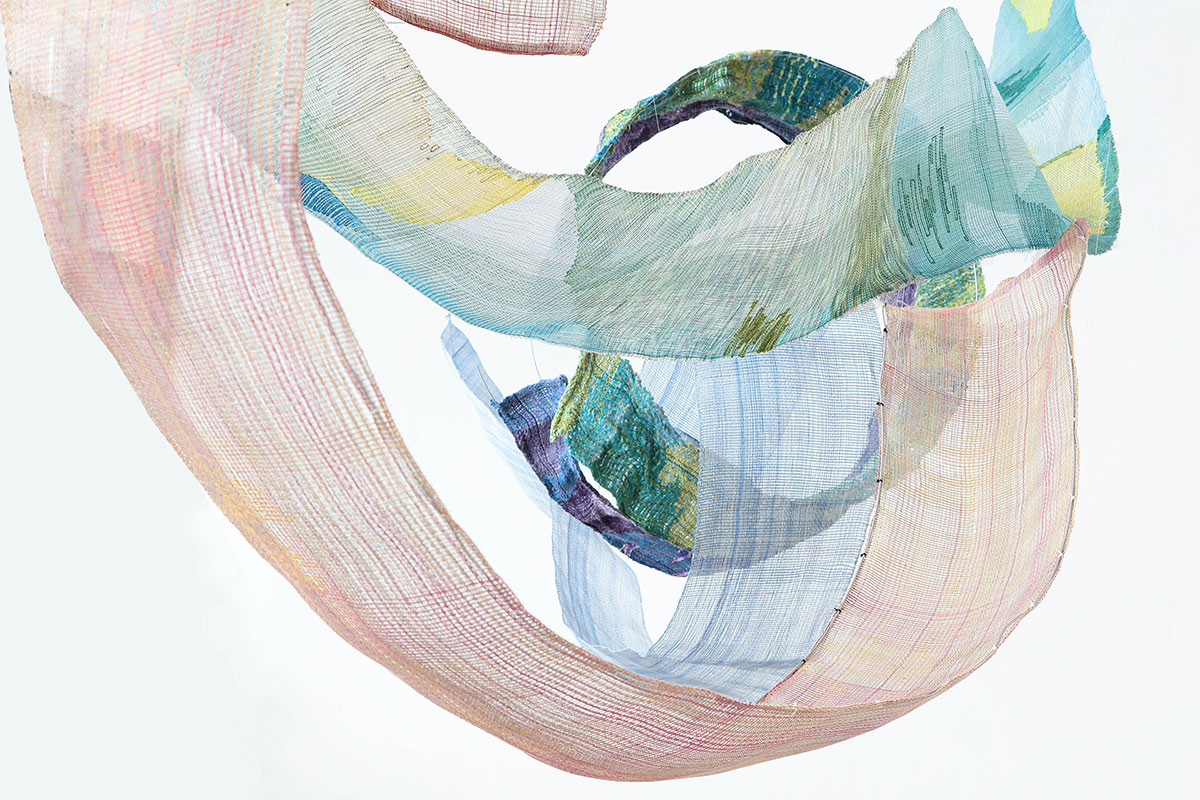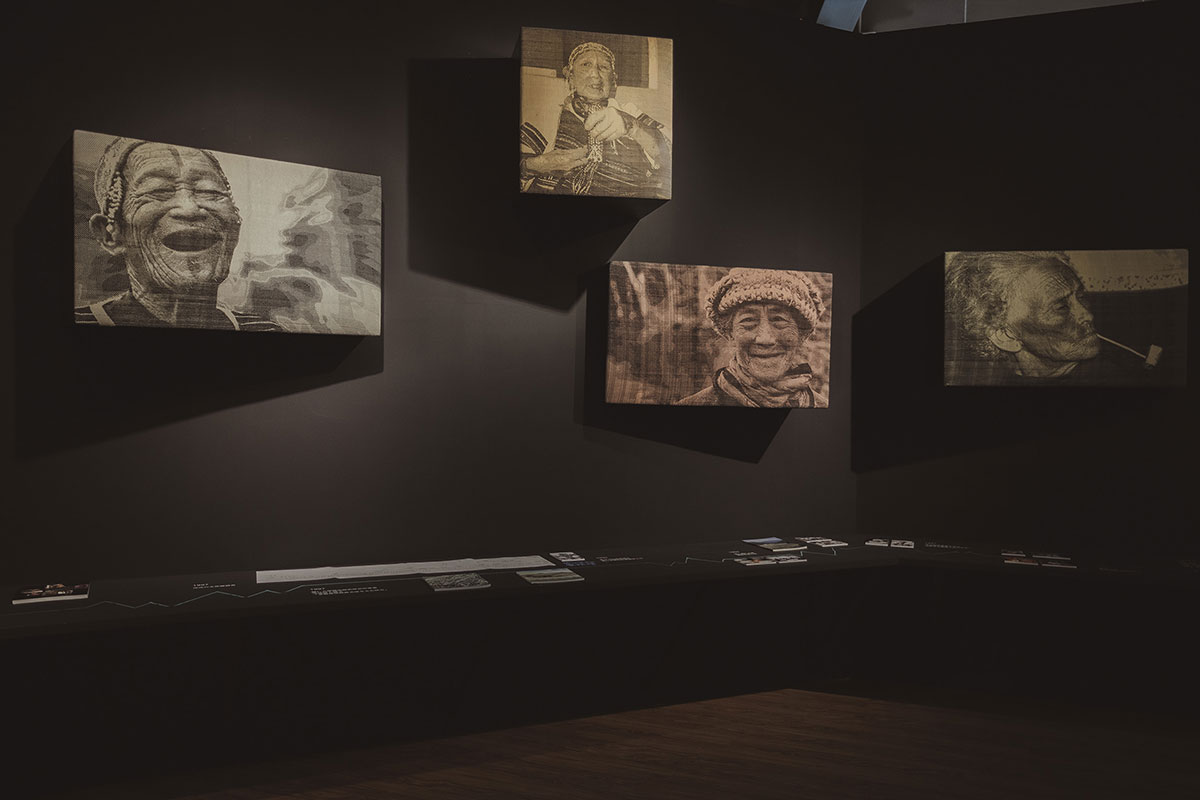Yuma Taru

The Spiral of Life — The Tongue of the ClothVI (yan pala na hmali)
- 2021, ramie, yarn of ramie and cotton, steel wool, metallic yarn
- Dimensions variable
- Courtesy of the Artist. Image courtesy of Taiwan Indigenous Peoples Cultural Park.
Curatorial Perspective
The Atayal people believe that a person’s life is “a work woven in the heavens” (T’minun na Utux). The spiral of life adopts the image of circles, intersecting different circles to portray how people intersect. Each circle in the work is incomplete, which implies that the Atayal people live in a state of openness, welcoming those whom they are fated to meet into their lives. A member of the Atayal community, Yuma Taru is a state-designated “preserver of important traditional art” and “living national treasure.” In 1991, she returned to her community with a 50-year plan divided into 5 periods of 10 years each, to focus on artisanal weaving techniques and cultural revival. Yuma Taru devotes her life to the study and preservation of the indigenous textile and weaving culture. As an artist, she has consistently experimented with transforming weaving in innovative ways, and has employed techniques of weaving to present the indigenous cosmic view. This makes her work the perfect example of the “Cosmotechnics” – the correspondence between technological order and moral order – coined by philosopher Yuk Hui. Her ongoing project –The spiral of life – the tongue of the cloth (yan pala na hmali), a large-scale weaving installation in a spiral form, refers to the Atayal people’s expectations for their elders: to possess a tongue that is as gentle as cloth and to use the power of tolerance to deal with anxieties and difficulties, in addition to experience and wisdom to resolve the feelings of uncertainty of their descendants and disputes among them. The artist, who is now of the age of an elder, hopes to live her life as if possessing a tongue of cloth. Drifts of Sentiments and Objects comprises documents and records to show the dimensions of her personal life. The work interweaves forgotten legacies and memories altered by different colonial regimes in history, and unveils a web of overflowing feelings and emotions, which closely connects the entangled past, present and future with the demonstration of national biopolitics, colonial history, and diverse cosmic views, exhibiting the complexity of contemporary indigenous life.
Creation Description
The indigenous Atayal people believe that a person’s life is “a work woven in the heavens” (T’minun na Utux). Moreover, works woven by Atayal women form a circle, the image of which is adopted in The spiral of life. Circles intersect, just as people intersect, with each circle incomplete. This implies that the Atayal people live in a state of openness, welcoming those whom they are fated to meet into their lives. The tongue of the cloth refers to the Atayal people’s expectations for their elders: to possess a tongue that is as gentle as cloth and to use the power of tolerance to deal with anxieties and difficulties, in addition to experience and wisdom to resolve the feelings of uncertainty of their descendants and disputes among them. Yuma Taru, who is now of the age of an elder, hopes to live her life as if possessing a tongue of cloth.
In 1991, Yuma Taru returned to her community with a 50-year plan divided into 5 periods of 10 years each, to focus on artisanal weaving techniques and cultural revival. She is now entering the fourth decade of this plan! During the first decade, she visited many Pan-Atayal communities, conducting field studies to understand the cultural content of her people. She also visited museums in Japan, the UK, and Canada, constructing information about woven textile works to retrieve lost artisanal techniques. In the second decade, she carried out systematic classification, analysis, and recording and began reproducing traditional clothing and cultivating weavers, sowing the seeds of hope for the revival of indigenous dyeing and weaving techniques. In the third decade, she turned her attention to ethnic education and founded the S'uraw Kindergarten, to teach children ethnic connotations and the concepts of global citizenship. In the fourth decade, she is promoting the revival of traditional fiber crop cultivation and weaving. After that, she will set her sights on a “ramie circular economy development plan,” which is of great significance in these times. As we follow in her footsteps, we understand the process by which she drifts between objects and emotions and their mutual influences.


